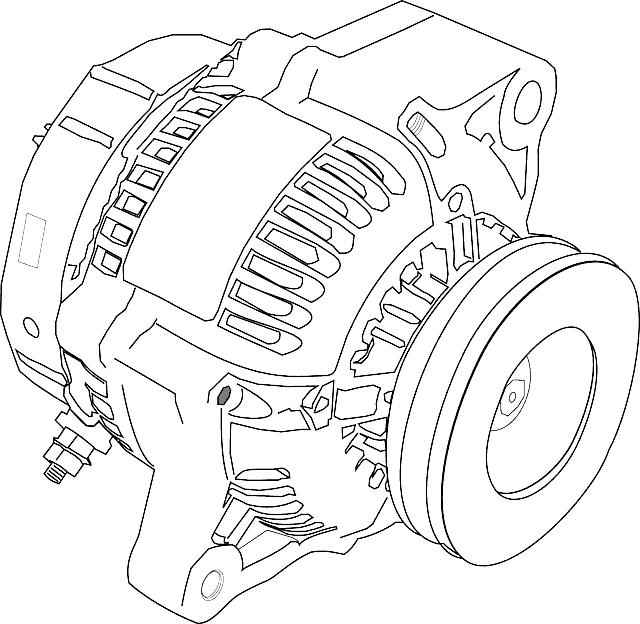What is a motor:
A motor, in the broadest sense, is a device that converts various forms of energy into mechanical energy to produce motion. Motors are used in a wide range of applications, from household appliances to industrial machinery, and there are several types depending on the energy source they use.

Types of motors~
Electric motor:
DC motor: These motors run on direct current (DC) electricity. They are widely used in applications where variable speed control is required. Common types include:
Brushed DC motor: These have brushes and commutators to change the direction of current in the motor windings.
Brushless DC motor (BLDC): These use electronic controllers to switch the current without the need for brushes, leading to higher efficiency and longer life. What is a motor?
AC motor: These motors operate on alternating current (AC) electricity. They are typically used in fixed-speed applications. The main types include:
Induction motors: These are the most common types of AC motors, where the rotor is driven to rotate by the magnetic field generated by the stator.
Synchronous motors: These operate at a speed synchronous with the current frequency, maintaining a constant speed regardless of the load.
Internal combustion engines:
Gasoline engines: These engines, commonly used in cars, burn gasoline to create mechanical motion. What is a motor?
Diesel engines: Often used in heavy machinery and trucks, these engines burn diesel fuel to produce motion.
Jet engines: These engines, used in aircraft, burn jet fuel to produce thrust.
Hydraulic motors: These motors use fluid pressure to produce motion and are commonly found in heavy equipment such as excavators and cranes.
Pneumatic motors: These motors use compressed air to produce motion and are often used in tools such as air wrenches and drills.
Main Components of Electric Motors
Stator: The stationary part of the motor, which usually contains windings or permanent magnets.
Rotor: The rotating part of the motor, which is affected by the magnetic field generated by the stator.
Commutator/Brushes: These components present in a brushed DC motor help change the direction of the current in the windings.
Bearing: Supports the rotor and allows it to rotate smoothly.
Shaft: The part that delivers the mechanical output of the motor.
Working Principle
The basic working principle of an electric motor involves electromagnetic induction. When an electric current passes through a conductor in a magnetic field, it experiences a force (Lorentz force) that produces motion. In a normal motor, it involves the interaction between the magnetic field generated by the stator and the electric current in the rotor windings, producing rotational motion.
Applications~
Home appliances: Fans, washing machines, refrigerators.
Transportation: Electric vehicles, trains.
Industrial machinery: Conveyor belts, robotic arms.
Tools: Drills, Saws, Air Compressors. What is a motor?
What is an Induction Motor?
An induction motor, also known as an asynchronous motor, is a type of AC electric motor in which the electric current required to produce torque is obtained by electromagnetic induction from the magnetic field of the stator windings. Induction motors are widely used in industrial and domestic applications due to their simplicity, reliability, and efficiency. What is a motor?
Main Components
Stator:
The stationary part of the motor, consisting of a set of coils that receive an AC power supply.
Rotor:
The rotating part of the motor, which is placed inside the stator. The rotor can be of two types:
Squirrel-cage rotor: Made of conducting bars short-circuited by end rings, resembles a squirrel cage.
Wound rotor: Has windings connected to an external resistance through slip rings. What is a motor?
Shaft: The output shaft connected to the rotor, which provides mechanical power. What is a motor?
What is Digital Motor?
A digital motor is a type of electric motor that uses digital technology to control its speed and operation. Unlike conventional motors, digital motors employ advanced electronic control systems to enhance performance, accuracy, and efficiency. What is a motor?
Main Components of a Digital Motor:
Motor:
The motor is the mechanical part that converts electrical energy into mechanical energy.
Driver:
The driver is an electronic device that controls the motor. It provides the appropriate voltage and current to the motor to control its speed and direction.
Control Unit:
The control unit usually includes a microcontroller or microprocessor. This component processes the input signals and executes control algorithms to adjust the motor’s performance based on various parameters such as speed, torque, and position. What is a motor?
Features and Benefits:
Precise Control:
Digital motors provide precise control over speed and position, making them ideal for applications requiring high accuracy.
Efficiency:
These motors are designed to operate more efficiently, reducing energy consumption and operating costs.
Programmability:
Control systems can be programmed to perform complex operations, allowing for customization and flexibility in a variety of applications. What is a motor?
Feedback mechanisms:
Many digital motors incorporate feedback systems such as encoders or sensors to monitor performance in real time and make necessary adjustments.
Applications:
Digital motors are used in a wide range of applications, including robotics, CNC machinery, electric vehicles, and household appliances such as high-performance vacuum cleaners and fans.
Example: Dyson Digital Motor
A well-known example of a digital motor is the Dyson digital motor, used in their vacuum cleaners and hand dryers. These motors are known for their high speed, efficiency, and ability to deliver powerful suction while being lightweight and compact. What is a motor?